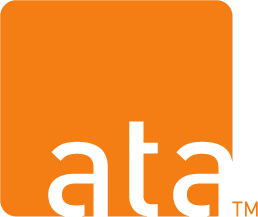Before finding the RFP for the grant, North Carolina WIC saw the need to upgrade their services to better meet the needs of the target population. The North Carolina team saw the opportunity to reach their target population where they are and decrease barriers to accessing services. Prior to the start of the grant, North Carolina upgraded their Management Information System (MIS) which began the process of streamlining the WIC experience. North Carolina WIC chose to develop a telehealth solution that would make WIC services relevant for their clients.
Project Overview
North Carolina WIC’s telehealth solution focuses on four components to tailor nutrition services to individuals. The four components are (1) an online participant portal (2) a video chat option on the portal for appointments, (3) fixed kiosks with the capacities of the portal in high-participant-traffic areas, and (4) a TeleWICService Center for short-staffed agencies to use for distance-based appointments.

Contracting and Request for Proposal (RFP)
Before being awarded the THIS-WIC grant, North Carolina WIC upgraded their MIS system which is currently maintained by GCOM. Given the relationship with GCOM, WIC leadership recommended using the same vendor for the telehealth solution as it would be easier to amend the current contract instead of going through procurement for a new vendor. Following this recommendation, North Carolina WIC partnered with GCOM to develop the telehealth solution.
Advice for Others
Hire a telehealth position.
As NC dove into their solution, they began to realize the need to hire for a telehealth-focused position. Although they did not have the capacity with current funding to add a member to their team, they suggested other agencies consider creating a full-time position designated to developing, maintaining and running a telehealth solution. In North Carolina’s case this would be a project manager designated to communicating with vendors, local agencies, and state staff members.
You don’t have to do it all at once.
When North Carolina set out to create a solution, they had four major components outlined; (1) an online participant portal (2) a video chat option on the portal for appointments, (3) five kiosks with the capacities of the portal in high-participant-traffic areas, and (4) a TeleWICService Center for short-staffed agencies to engage for distance-based appointments. Although all four components are important, North Carolina WIC staff quickly recognized that they had taken on a lot at once. Since all the components support one another in the delivery of telehealth-based services, North Carolina WIC recommends prioritizing the major components to a successful telehealth solution and rolling them out in a thoughtful way. This will allow everyone to adapt and ensure nothing falls through the cracks.
In house technical support.
North Carolina WIC outsources the majority of their technical support, including coding for the system. NC WIC wondered whether it would be easier to have an in-house coder. Having in- house coders who understand the nuances of how NC policies intersect with the MIS might make communication during development easier.
Even with all the challenges, North Carolina WIC would do it all over again. They also noted that without the nudge of the grant to implement a telehealth solution, this innovative approach likely would not have been prioritized. North Carolina WIC is eager to serve the population in a more effective and efficient way.
The North Carolina WIC Team
Cara Perdue, Regional Nutrition Consultant
Nan Paddington, WIC Nutrition Program Consultant
Katie Clarke, Nutrition Program Consultant
Jim Finley, State MIS Release Manager
Sherry Ebner, WIC Nutrition Services Manager
For more information on North Carolina WIC please visit their website here





